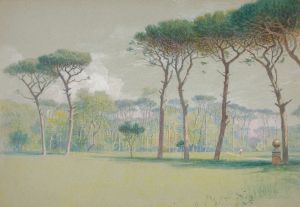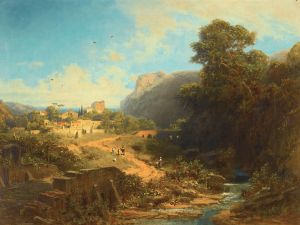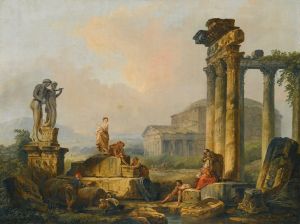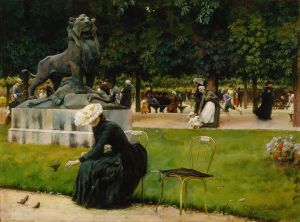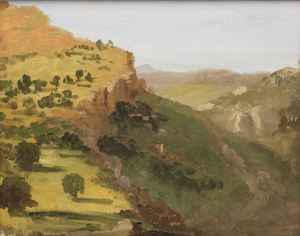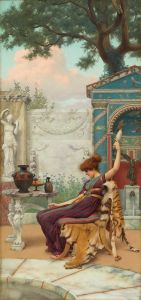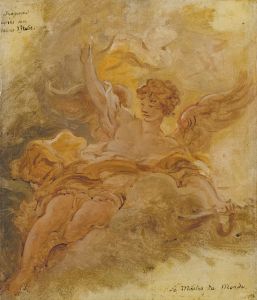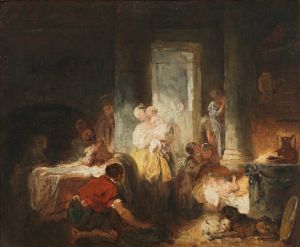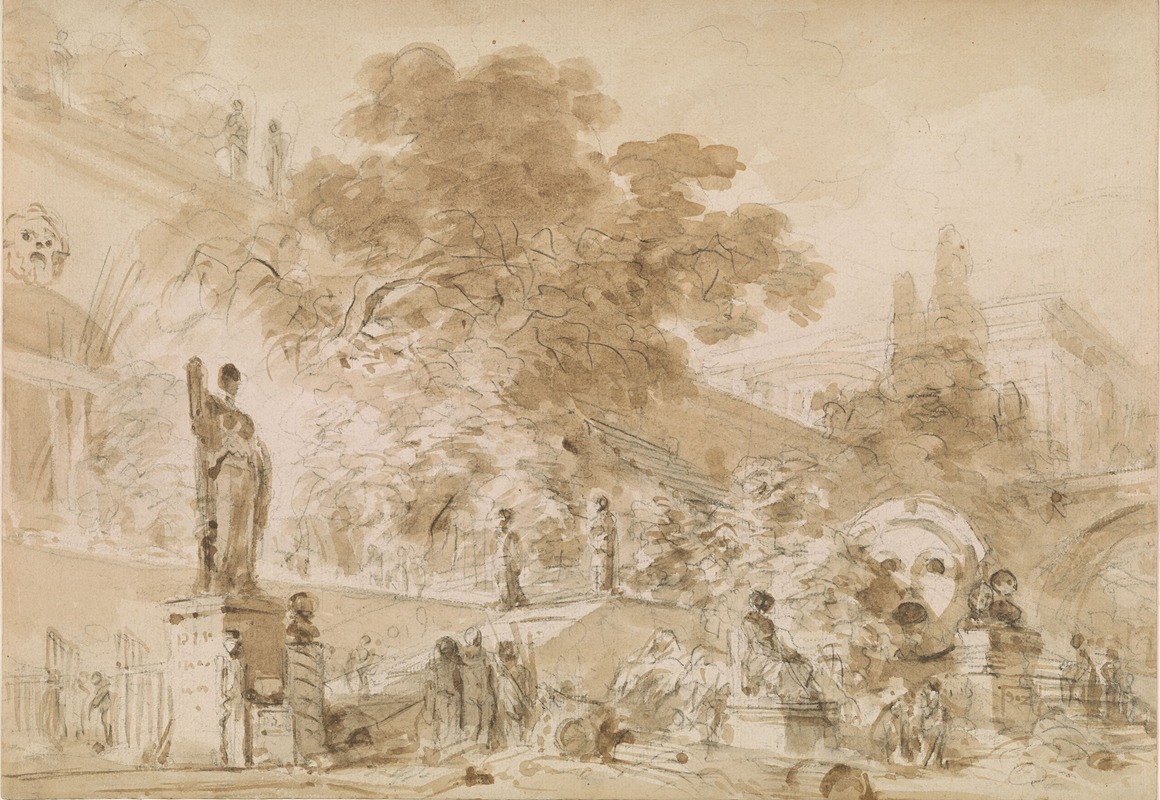
An Imaginary Italian Garden
A hand-painted replica of Jean-Honoré Fragonard’s masterpiece An Imaginary Italian Garden, meticulously crafted by professional artists to capture the true essence of the original. Each piece is created with museum-quality canvas and rare mineral pigments, carefully painted by experienced artists with delicate brushstrokes and rich, layered colors to perfectly recreate the texture of the original artwork. Unlike machine-printed reproductions, this hand-painted version brings the painting to life, infused with the artist’s emotions and skill in every stroke. Whether for personal collection or home decoration, it instantly elevates the artistic atmosphere of any space.
Jean-Honoré Fragonard, a prominent French Rococo painter, is celebrated for his exuberant and playful compositions, often depicting scenes of romance and leisure. One of his works, "An Imaginary Italian Garden," exemplifies his mastery in capturing the essence of idyllic landscapes infused with a sense of whimsy and fantasy. However, it is important to note that detailed information specifically about "An Imaginary Italian Garden" is limited, and much of what is known about Fragonard's work in general can provide context for understanding this painting.
Fragonard was born in 1732 in Grasse, France, and trained under François Boucher, another leading Rococo artist. His style is characterized by its lightness, fluidity, and vibrant use of color, which are evident in his landscape paintings. Fragonard's works often reflect the leisurely pursuits and romantic escapades of the aristocracy during the 18th century, a time when the Rococo style was at its peak.
"An Imaginary Italian Garden" likely falls within the genre of capriccio, a type of painting that combines architectural elements and landscapes in imaginative ways. This genre was popular among artists who sought to create idealized visions of nature and architecture, often drawing inspiration from the classical ruins and lush gardens of Italy. Fragonard's ability to blend reality with fantasy would have made him particularly adept at producing such works.
In his landscapes, Fragonard often employed a loose, expressive brushwork that conveyed a sense of movement and spontaneity. This technique allowed him to capture the play of light and shadow, creating a dynamic and atmospheric effect. The use of warm, pastel colors and soft, diffused lighting would have contributed to the dreamlike quality of "An Imaginary Italian Garden."
Fragonard's fascination with gardens and nature is evident in many of his works, where he often depicted lush, verdant settings that served as backdrops for his figures. These gardens were not just realistic portrayals of nature but were imbued with a sense of enchantment and fantasy, inviting viewers to escape into a world of beauty and tranquility.
While specific details about "An Imaginary Italian Garden" are scarce, it can be appreciated within the broader context of Fragonard's oeuvre. His landscapes, whether real or imagined, reflect his ability to evoke emotion and transport viewers to a world of elegance and charm. Fragonard's work remains influential, celebrated for its technical skill and the joyful, carefree spirit it embodies.
In summary, while detailed information about "An Imaginary Italian Garden" is not readily available, understanding Fragonard's artistic style and the context of his work provides insight into what such a painting might represent. His legacy as a master of the Rococo style endures, with his paintings continuing to captivate audiences with their beauty and imaginative flair.





